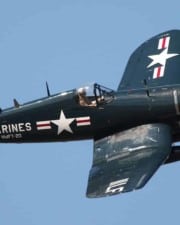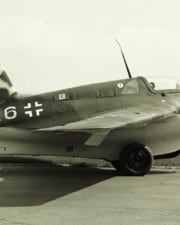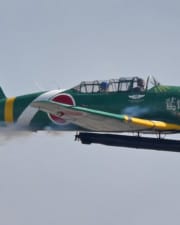The Soviet Union had some of the best fighter planes at its disposal during World War Two. These planes were crucial in repelling the Nazi invasion and eventually liberating much of Europe. Here are some of the best aircraft that saw action in the Soviet air force during World War Two.
When discussing the best military aircraft of World War Two, most people focus on the seemingly unstoppable German Luftwaffe, the firepower of the Americans, or the daring of the British RAF. However, ignoring the Soviet contributions would be a mistake. Soviet airplanes helped dominate the skies and defeat Nazi Germany.
The Soviet Union, now divided into Russia and several smaller states, suffered some of the heaviest losses during World War Two. These losses only inspired the government and population to dig deep and fight off the Nazis. While advances in military aircraft certainly made their mark, none of the victories would have been possible without the bravery of the people flying those planes.
Here are some of the best fighter planes that saw service for the Russian or Soviet army during World War Two (although we couldn’t resist including a few bombers). The planes were chosen thanks to their maneuverability, abilities, and contributions to the overall military effort.
10. Polikarpov I-16
The Polikarpov I-16 was one of the least glamorous-looking planes flying for any air force during World War Two. It was developed in the mid-1930s and was pretty advanced for its time, as the low-wing monoplane was one of the most maneuverable of the time.
However, by the time the Germans invaded the Soviet Union five years later, the Polikarpov I-16 (fondly nicknamed “The Rata” or rat) was already hopelessly obsolete. The problems clear during its inception, such as its poor visibility and bad control, were all the more visible when faced with a far superior air force.
With so many problems, why is the Polikarpov I-16 on the list at all? At the beginning of the German invasion, the Soviet Union had almost no other aircraft to rely on. Although it suffered heavy casualties in the defense of Russia, the Polikarpov I-16 helped defend the home front while better aircraft were developed.
9. Petlyakov Pe-3
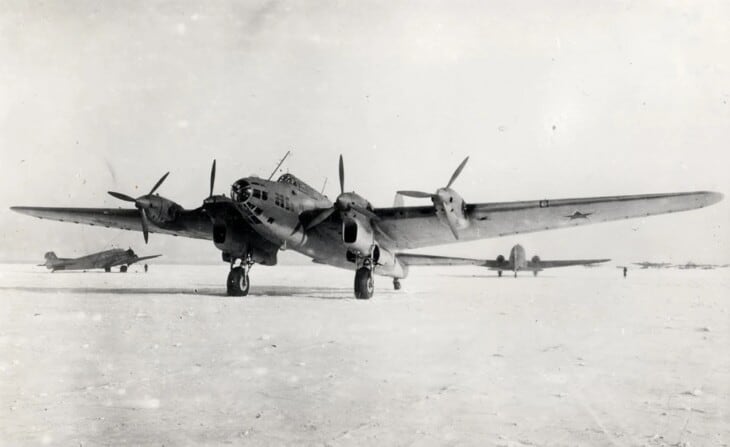
The Pe-3 from Petlyakov was one of the heaviest fighters the Soviet air force had at its disposal during World War Two. First developed in the early 1940s, only a few were produced before the Germans were invaded. Production capacities reached 300 in total.
The twin-engine Pe-3 was remarkable in terms of the sheer amount of weaponry it could fit on its powerful fuselage. It had two cannons in front, another in the turret, and another set of cannons or machine guns, depending on the customization, in the nose. With such firepower, no wonder the Pe-3 was seen as such an important aircraft!
However, the Pe-3 was comparatively unimportant to the overall Soviet war effort, as seen by the relatively low production numbers. There are a few reasons for this. Some experts think that there weren’t enough engines that fit the specific twin wing-mounted configuration, while others say that the design was too complicated to mass produce under war conditions, especially when superior aircraft were already on the market.
8. Mikoyan-Gurevich MiG 3

The MiG 3 is one of the earliest fighter planes of the famous Mikoyan-Gurevich MiG company. This fighter plane specialized in high-altitude battles thanks to its superior climbing ability and speed.
Initial attempts by the Mikoyan-Gurevich team to develop a high-powered fighter failed due to poor range, low impact firepower, and not enough protection for the pilot and crew. The MiG 3 built on the failures of earlier models such as the MiG 1 to create a fighter that could counter the infamous Luftwaffe.
However, the poor MiG 3 still could not counter the far superior flying machines of the Nazi invading force. Although it was fast and caused the invaders plenty of trouble from high altitudes, its stiff controls meant that pilots had trouble maneuvering and could not hold their own in dogfights. Still, the MiG 3 was crucial in stopping the advance of the Germans until 1943, when it finally became clear they were outmaneuvered.
7. Yakovlev Yak-1

The Yak-1 may not be the most glamorous or advanced plane produced by Yakovlev during World War Two, but it is important nonetheless because it set a base for the later developments of newer models in the Yak series and was crucial in turning the tide against the Luftwaffe in the very early days of the war.
Developed in 1940, the Yak-1 (preceded by the prototype I-26) was a no-nonsense, no-frills fighter plane. Its mostly wooden body and single Klimov piston engine did not seem very modern compared to the German planes attacking the Soviet Union.
However, the Yak-1 was purposefully designed to be simplistic so that it could be mass-produced and easily repaired. As hundreds and thousands of these poured off the production line in the early years of the 1940s, the ragtag Soviet Army turned the tide against the Germans. The old-fashioned wooden Yak-1s even gave the famous Messerschmitt Bf 109s a run for their money.
6. Tupolev Tu-2

The Tupolev Tu-2 often gets ignored in roundups of Soviet military history in favor of flashier names such as Lavochkin, Yakovlev, and MiG. However, this tactical bomber was one of the backbones of the Soviet Air Force and a favorite of pilots.
The Tu-2 was a tactical bomber rolled out at the end of 1940. It had twin engines, powerful weaponry including bombs and autocannons, and a highly resilient body that could withstand heavy attack. Even after World War Two, the Tu-2 saw service in the Soviet military and in the air forces of allied countries.
Andrey N. Tupolev, aviation designer and co-founder of the company that made the Tu-2, certainly had the right motivation to put together a good design—he was in prison at the time under charges of sabotage!
5. Lavochkin LA-7
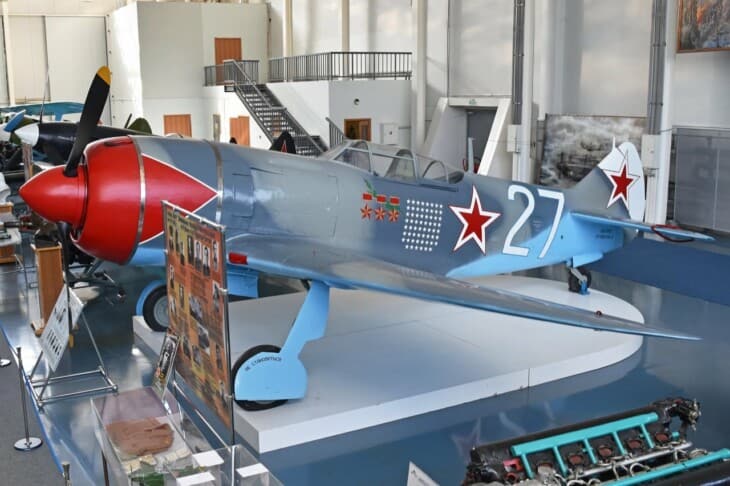
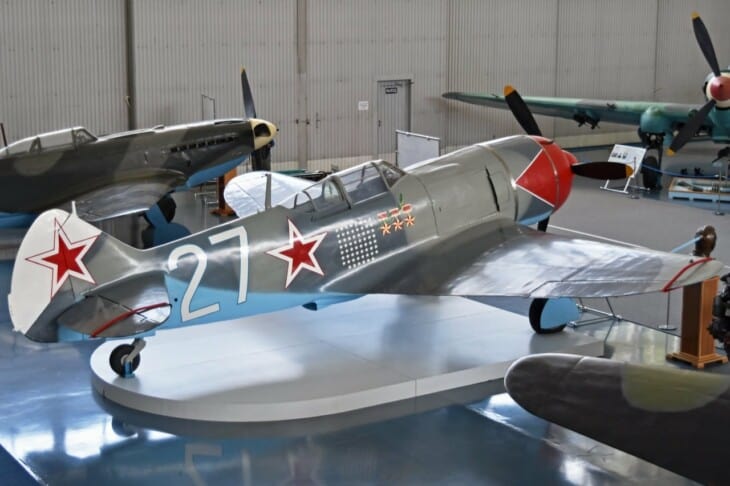
The LA-7 fighter planes from Lavochkin were technologically the best fighter planes in World War Two by the end of the war. The LA-7 built on the existing LA-5 model by adding a more powerful Shvetsov engine to increase the airplane’s maximum speed.
Other characteristic features of the plane were its impressive maneuverability, climbing abilities, and firepower. The Luftwaffe opposition had almost no chance.
The only reason the Lavochkin LA-7 is not higher on this list is that it came into the war too late to make much of a difference. By September 1944 when it entered service, it was already clear to most that the Soviet army was on a path to steamroll the Nazis.
4. Ilyushin Il-2
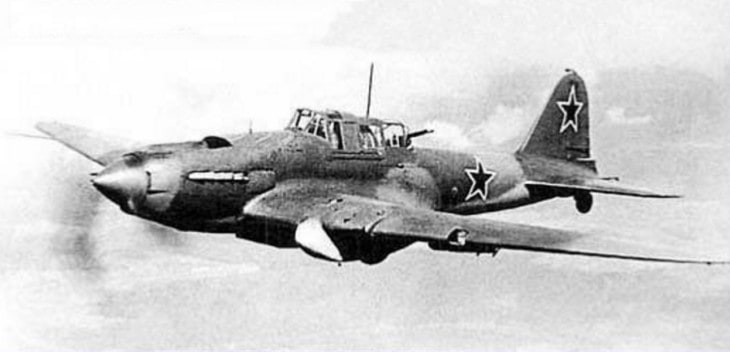
Joseph Stalin himself called the Ilyushin Il-2 “as necessary to the Red Army as air or bread.” With such high praise, no wonder this assault bomber ranks so highly on this list.
The Ilyushin Il-2 outclassed enemy aircraft thanks to its high weapons capacity and incredible armaments. Although the Il-2s were bulky due to their massive size, they were still capable of destroying many enemy aircraft. They were even nicknamed “the Black Death.”
The importance of the Il-2 is shown by its production numbers. The Soviet Union churned out over 36,000 units of this bomber, making it the most produced airplane in history.
3. Yakovlev Yak-9
By the end of World War Two, the Yakovlev Yak-9 was one of the most advanced fighter planes cutting through the skies of Europe. Even pilots of the Luftwaffe grudgingly admitted that the Yak-9 was the best jet they ever fought against.
What made the Yak-9 so superior? It certainly helped that it had some of the best-mounted firepower around, including a cannon and two machine guns. It was versatile enough to work as an interceptor, fighter, and night flyer.
The superior speed, maneuverability, and firepower of the Yak-9 meant that the tide of the air battle for control of the Soviet Union changed as soon as it entered production.
2. Lavochkin LA-5
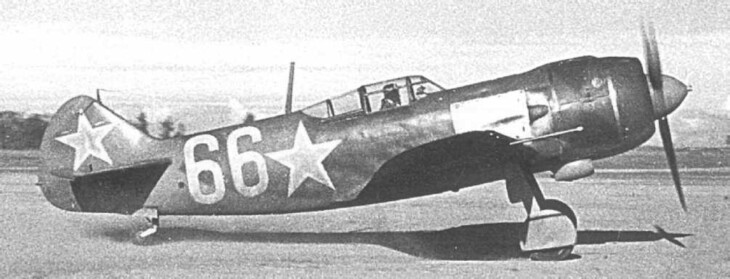
The Lavochkin LA-5 was one of the workhorses of the Soviet air force throughout World War Two. The key was including the Shvetsov engine in the design, which improved the power.
The LA-5s are remarkable for their speed. They could reach a maximum speed of 405 miles per hour, exceeding many aircraft of the time. The Lavochkin LA-5 also had an impressive range, maneuverability, and controls.
Even more impressive is that the LA-5 was designed and rolled out in 1942, in the middle of a brutal war. With limited materials (the body was made of wood instead of more modern metal) and time, Soviet engineers still created one of the best fighter planes of the war.
1. Yakovlev Yak-3
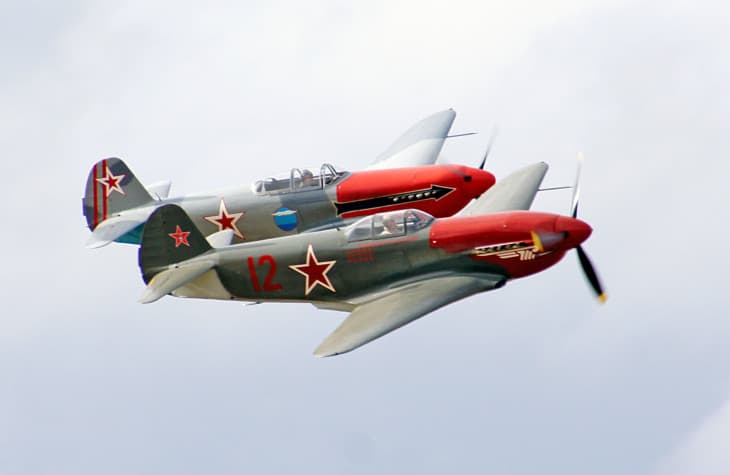
Many experts agree that the Yakovlev Yak-3 was the best airplane fielded by the Soviet military during World War Two.
The Yak-3 managed to have superior speed, maneuverability, climbing rate, and more compared to German equivalents, all while flying in the lightest body of any aircraft in World War Two.
Pilots flying the Yak-3 managed incredible feats of bravery during dogfights with German planes, such as beating superior forces with barely any losses. Part of the credit is due to the bravery of Soviet pilots, but the Yak-3’s superior performance helped turn the tide on the Eastern Front.
Related Posts



